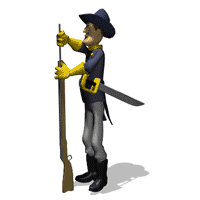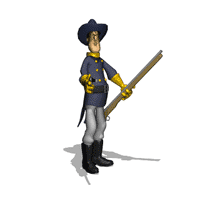

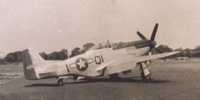
A P-51 Mustang flown
by Merrion
Photo Courtesy Maurice Higginbotham
Dated September 21, 1944. "We had a welcome surprise today. Lt. Higginbotham, who had been reported N.Y.R. (Not yet returned) on the 19th of September, returned to the base. He recounted the following interesting story:
"En route to R/V with the Bombers on the 19th of September, I had trouble with my oxygen system. I notified my flight leader and he dispatched Lt. Schlack to escort me home. I lost him in the haze east of Liege, so I set a 270-degree course for home and let down to 11,000 feet.
At this time, my engine started acting up. (The gas line had been cut by a bullet or flak.) I could only get 20" of mercury with full power on, so I sought a place to set the ship down. Haze and 8/10 clouds between 3,000 and 7,000 feet hindered me from spotting an airfield. I finally let down in a large open field, wheels up.
The plane hadn't stopped skidding before people began crowding around the plane. "I spotted a man with a German blouse and machine pistol heading toward the plane, so I detonated my IFF equipment.
Closer investigation proved these people to be Belgians, and the man whom I suspected of being German turned out to be a member of the local resistance movement. I thought it better not to question him about his belongings. Another man pushed his way through the crowd with a show of authority and took charge. He was a former town treasurer of Charleroi, and a leader in the local Belgian Resistance movement.
With my phrase card I was finally able to get across that I wanted the local American Authorities. He said the nearest town where I could receive aid was Mons, and that he would take me there. En route we stopped at his home, a modern, beautiful mansion, and he insisted on showing me what the word hospitality can mean. I met his family, and also a good portion of his wine cellar. They tried to force on me all the food they had, but I thought better of it, and settled for some Belgian cookies and a few samplings of his wine cellar. His daughter showed a great deal of interest in the contents of the aid box, so I opened it up and gave her all the candy.
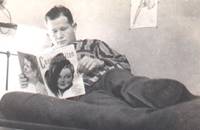
Merrion relaxing
between missions
Photo Courtesy Maurice Higginbotham
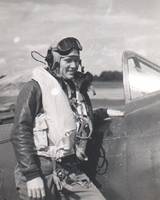
Merrion ready for a
flight
Photo Courtesy Maurice Higginbotham
Murphy and Merrion joined
the army as volunteers on October 17, 1940. After Boot Camp, Murphy was
assigned to Company I, and Merrion to Company C, 23rd. Infantry Regiment,
Second (Indianhead) Division, and were stationed at Ft. Sam Houston
in San Antonio. Soon after that, they were sent to Louisiana, during
the Louisiana Maneuvers.
Merrion and another young man were chosen to attend Officer's Candidate
School at Ft. Benning, Georgia, in April 1942. There, was
commissioned a Second Lieutenant in July. He was then sent to Ft. Riley,
Kansas and assigned to a medical battalion where he was promoted to First
Lieutenant. He didn't like being in a medical battalion, so he applied for a
transfer to the Army Air Corps as a flying cadet. He earned his "Wings"
February 8th 1944 at Foster Field, Victoria, Texas. He had
three more weeks of ground school, and then trained in the P-47
Thunderbolt Fighter, until being sent to England in July 1944 aboard the
Luxury Liner Queen Elizabeth, which was converted to use as a
troop ship during World War II.
In England, he was stationed at Martlesham Heath, near Ipswitch. He
was assigned to the 361st. Squadron, 356th Fighter Group, and 67th
Wing of the 8th Air Force on August 21, 1944.
He flew his first combat mission on September 3, 1944, into Belgium and
Germany. Serious trouble started when his flight of P-47 Thunderbolts dashed
into some clouds in an effort to escape a heavy concentration of flak. When
he finally flew clear of these clouds, the other planes in his group had
disappeared. He came out over a town, and became the sole target of every
anti-aircraft gun on the ground. Somehow, he escaped this tremendous
barrage. He was now alone with a dead radio, and a nearly empty gas tank.
Then, he ran into bad
weather with only his compass to guide him. He flew back to his base in
England with instruments (Blind flying), reaching the airfield just as his
engine began to sputter from lack of gasoline. "God was my constant
companion and was responsible for my safe return," he said. Just moments
before reaching his air base he came out of the clouds into clear weather.
The runway just happened to be lined up perfectly, enabling him to land on
his first pass. He didn't even have enough gas to circle the field. Just as
his wheels touched the runway, he ran completely out of gas. His plane had
to be towed the rest of the way with a tractor. "I had just one hole in my
right wing, and a lot of dents and scratches from the flak," he said. "I was
so tense that I could hardly let go of the plane's controls."

Lt. Merrion
Higginbotham
Photo Courtesy Maurice Higginbotham
